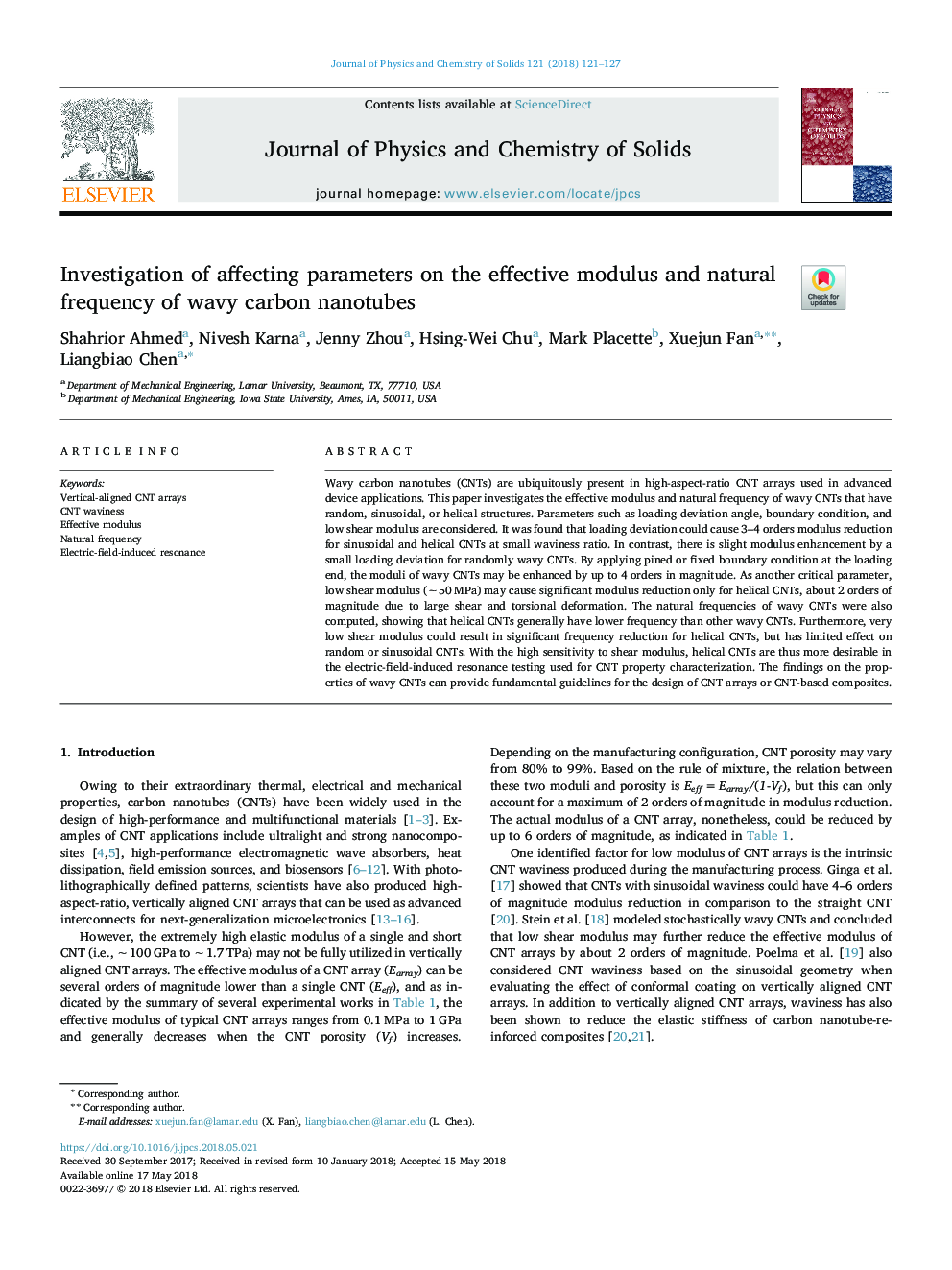| Article ID | Journal | Published Year | Pages | File Type |
|---|---|---|---|---|
| 7919911 | Journal of Physics and Chemistry of Solids | 2018 | 7 Pages |
Abstract
Wavy carbon nanotubes (CNTs) are ubiquitously present in high-aspect-ratio CNT arrays used in advanced device applications. This paper investigates the effective modulus and natural frequency of wavy CNTs that have random, sinusoidal, or helical structures. Parameters such as loading deviation angle, boundary condition, and low shear modulus are considered. It was found that loading deviation could cause 3-4 orders modulus reduction for sinusoidal and helical CNTs at small waviness ratio. In contrast, there is slight modulus enhancement by a small loading deviation for randomly wavy CNTs. By applying pined or fixed boundary condition at the loading end, the moduli of wavy CNTs may be enhanced by up to 4 orders in magnitude. As another critical parameter, low shear modulus (â¼50â¯MPa) may cause significant modulus reduction only for helical CNTs, about 2 orders of magnitude due to large shear and torsional deformation. The natural frequencies of wavy CNTs were also computed, showing that helical CNTs generally have lower frequency than other wavy CNTs. Furthermore, very low shear modulus could result in significant frequency reduction for helical CNTs, but has limited effect on random or sinusoidal CNTs. With the high sensitivity to shear modulus, helical CNTs are thus more desirable in the electric-field-induced resonance testing used for CNT property characterization. The findings on the properties of wavy CNTs can provide fundamental guidelines for the design of CNT arrays or CNT-based composites.
Keywords
Related Topics
Physical Sciences and Engineering
Materials Science
Electronic, Optical and Magnetic Materials
Authors
Shahrior Ahmed, Nivesh Karna, Jenny Zhou, Hsing-Wei Chu, Mark Placette, Xuejun Fan, Liangbiao Chen,
